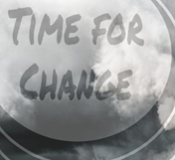
Harvey Levenson responses to Plata's article: 4 Keys to Thriving Beyond 2021.
Dr. Harvey R. Levenson is Professor Emeritus, former Department Head of the Graphic Communication Department, and past Director of the Graphic Communication Institute at Cal Poly. He remains active in the industry as a speaker, writer, consultant, and Expert Witness.
With Harvey’s permission, his response is published below.
Dear Andy and Julie,
I read with interest your piece, 4 Keys to Thriving Beyond 2021: Accelerate Digital and Automation Transformations, and wanted to share a few thoughts, and then look forward to the 2nd, 3rd, and 4th installment.
Your points: 4 Keys to Thriving Beyond 2021 are certainly needed to thrive in the future:
- Accelerate digital and automation transformations
- Wholeheartedly embrace new strategies and practices
- Establish Green as a competitive advantage
- Aggressively market your business to a much broader audience
RHETORIC AND COMMUNICATION
However, I’m going to be ever so bold and propose that there is a preface even prior to these four points, and that being the underlying purpose of the four goals—rhetoric and communication. Rhetoric is persuasion, and communication is the process used to persuade. Are these not the purposes of nearly everything related to the need for and use of printing, graphic communication, graphic design, and related practices?
ARISTOTLE
 Scholars have debated this for centuries, and the consensus seems to be that everything is communication, and all communication is rhetoric—a means to persuasion.
Scholars have debated this for centuries, and the consensus seems to be that everything is communication, and all communication is rhetoric—a means to persuasion.
Actually, Aristotle initially brought light to this in his definitions of Ethos, Pathos, and Logos—Greek terms that he coined. To Aristotle, Ethos, Pathos, and Logos are modes of persuasion used to convince audiences. They are also referred to as the three artistic proofs as follows.
Ethos, or the ethical appeal, means to convince an audience of the author’s credibility or character.
Pathos, or the emotional appeal, means to persuade an audience by appealing to their emotions.
Logos, or the appeal to logic, means to convince an audience by use of logic or reason.
These are all intended outcomes of communication—print and non-print—and rhetoric is the undergirding.
COMMUNICATION TECHNOLOGY
One can easily argue that the development and growth of communication technology, traditional or digital, print or non-print was to distribute and convince, i.e., to communicate and persuade. Books are written for these purposes, as are news media and the entire fields of advertising and public relations.
Your first key, Accelerate digital and automation transformations, is likely meant to speed communication and, thereby, speeding the influence that communication has. And, serendipitous world events often force the development of new and faster ways to communicate and influence.
COVID-19
Your reference to COVID-19 is a perfect example. It forced an unprecedented time to develop vaccines and an unrelenting communication campaign—print and electronic—to inform the world about procedures and protections for preventing and coping. An entire new way of communicating, teaching, and learning evolved as a result—remote communication.
COVID-19 is a perfect example. It forced an unprecedented time to develop vaccines and an unrelenting communication campaign—print and electronic—to inform the world about procedures and protections for preventing and coping. An entire new way of communicating, teaching, and learning evolved as a result—remote communication.
When the pandemic is gone, Zooming will not be. When the pandemic is gone, distance teaching and learning will not be. When the pandemic is gone, business travel will not revert to what it used to be because business and commerce have learned that there is an equally effective, less time-consuming, and much less expensive way to communicate in many instances. Communication technology has made all of this
possible.
THE EVOLVING PRINTING INDUSTRY
The printing industry will continue to evolve and be redefined due to more effective and more persuasive communication technology. For example, one of my more recent coauthored PRINTED books, Introduction to Graphic Communication, uses Ricoh’s Clickable Technology converting a PRINTED book into one that communicates via printing, audio, and video. It appeals to different learning styles and preferences—reading, listening, and viewing videos. While published before the pandemic, it became very popular in serving teaching, learning, and overall remote communication during the pandemic. Now that this technology has been experienced, we anticipate that it will continue being used after the pandemic.
As another example is the rapid development in e-ink technology. It has the promise of revitalizing the newspaper industry. Newspapers (on newspaper-thin substrates) having images (text and graphics) that automatically change daily with updated news. No longer will there be the need to go outside on a cold winter morning to retrieve that day’s newspaper—simply wake up and look at yesterday’s newspaper because it will have today’s news.
You noted in your article working closely with companies ranging from governments to some of the world’s largest enterprises and small owner-operated companies. You noted that you have followed the financial markets and have been privileged to attend discussions with highly regarded business thought leaders, and have interviewed print company owners. I expect such explorations and discussions in the future will include the impact of technologies that have emerged and grown over the past few years, and particularly as a result of the pandemic—because these technologies have enhanced the speed and influence of communication and are not passing fads, but worthwhile investments.
 DIGITAL TECHNOLOGIES AND AUTOMATION TRANSFORMATIONS
DIGITAL TECHNOLOGIES AND AUTOMATION TRANSFORMATIONS
You are correct in what you wrote about accelerating Digital technologies and automation Transformations. You write that: In the past, digital and automation were considered cost-saving investments. But now, they need to be recognized as strategic competitive strategies. Business is gained or lost based on a company’s ability to support their clients’ important initiatives.
These client initiatives are and always have been quicker, less expensive, and more persuasive communication. Here again, rhetoric is the undergirding of communication that customers want, even though they may not know it in these terms. And communication is the delivery process.
And, yes, as you astutely noted from a McKinsey & Company article:
- COVID-19 speeded the adoption of digital technologies by several years.
- COVID-19 has pushed companies over the technology tipping point—and transformed business forever.
ANOMALIES
In my view, COVID-19 was an anomaly that created anomalies in science, education, technology, business, and in overall communication—anomalies that will remain so, as in the words of famous physicist Thomas Kuhn in his seminal book, The Structure of Scientific Revolutions, until new anomalies come along to replace them.
I hasten to note that I believe that your Software Assistance Division is indeed an excellent barometer for digital acceleration to inform and enlighten financial institutions, retailers, and manufacturers in upgrading their print infrastructure to become the most effective communication and rhetorical tools in serving their clients. What has occurred over the past few years is a window on the future.
Their goal should be to get information to people faster and more conveniently than ever before. They should work on changing their print distribution from print-and-distribute channels to distribute-and-print. This has been trending for quite a few years and is now accelerating to save on production, mailing, and shipping costs and to get information to the clients and end-users as quickly and effectively as possible.
You astutely noted:
 Since Gutenberg, the print industry has been consistently upgrading technology to meet customer initiatives. And during all those times of upgrades, some resisted and longed for the old ways. But, print has survived…by prioritizing customer needs.
Since Gutenberg, the print industry has been consistently upgrading technology to meet customer initiatives. And during all those times of upgrades, some resisted and longed for the old ways. But, print has survived…by prioritizing customer needs.
You also wrote:
The goal of an automation initiative should be to create a smoothly operating, seamless production and back-office environment that automatically captures and makes accessible all production, costing, and problem information in real-time. Eliminating reruns, workflow slow-downs, and excessive labor results in measurable production and profit increases.
This is all correct, but the underlying need has always been the most effective and influential means of delivering meaningful information. I will end where I started by noting Aristotle. Remember Ethos, Pathos, and Logos. This is what the printing and related industries are all about—rhetoric and communication.
I tremendously enjoy reading about your visions, and I look forward to reading what comes next.
With very best wishes,
Harvey
Do you agree with Harvey’s points? We would like to hear your thoughts, use the comment section below.
In Closing
 Resisting change can be debilitating if not fatal. Sometimes it is best to make resource investments as soon as possible. The OutputLinks Communications Group's Software Assistance associates are available to discuss your upgrade objectives.
Resisting change can be debilitating if not fatal. Sometimes it is best to make resource investments as soon as possible. The OutputLinks Communications Group's Software Assistance associates are available to discuss your upgrade objectives.



Prefer to comment without registration? Click in the Name field and select "I'd rather post as a guest"